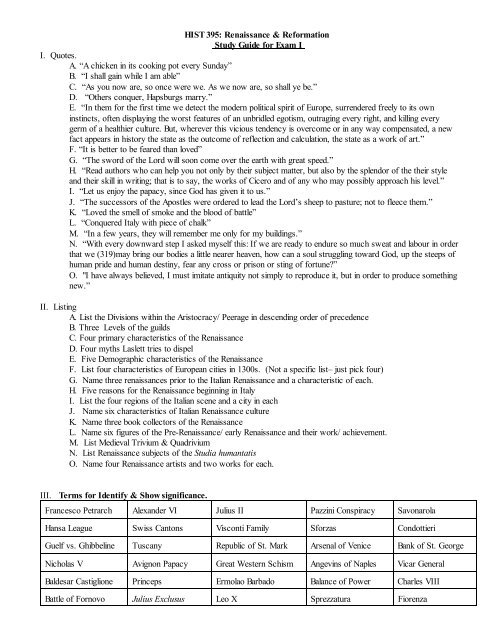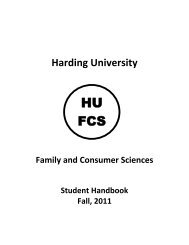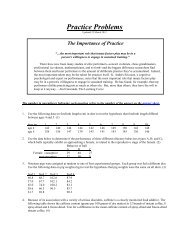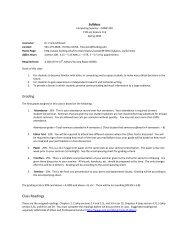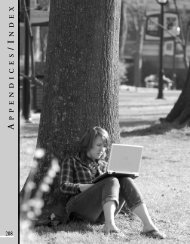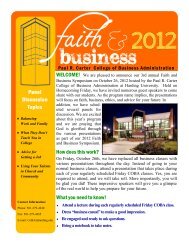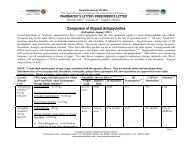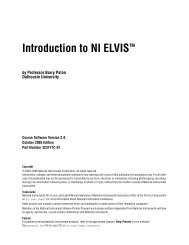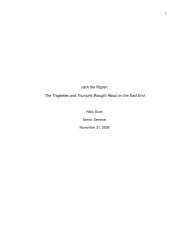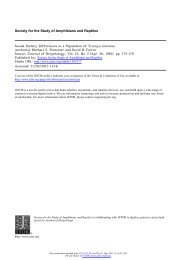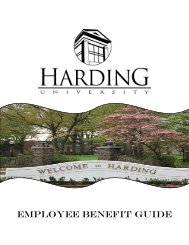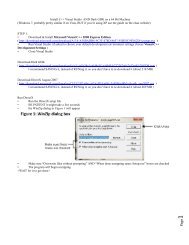Renaissance & Reformation Study Guide for Exam I I. Quotes. A.
Renaissance & Reformation Study Guide for Exam I I. Quotes. A.
Renaissance & Reformation Study Guide for Exam I I. Quotes. A.
Create successful ePaper yourself
Turn your PDF publications into a flip-book with our unique Google optimized e-Paper software.
HIST 395: <strong>Renaissance</strong> & <strong>Re<strong>for</strong>mation</strong><br />
<strong>Study</strong> <strong>Guide</strong> <strong>for</strong> <strong>Exam</strong> I<br />
I. <strong>Quotes</strong>.<br />
A. “A chicken in its cooking pot every Sunday”<br />
B. “I shall gain while I am able”<br />
C. “As you now are, so once were we. As we now are, so shall ye be.”<br />
D. “Others conquer, Hapsburgs marry.”<br />
E. “In them <strong>for</strong> the first time we detect the modern political spirit of Europe, surrendered freely to its own<br />
instincts, often displaying the worst features of an unbridled egotism, outraging every right, and killing every<br />
germ of a healthier culture. But, wherever this vicious tendency is overcome or in any way compensated, a new<br />
fact appears in history the state as the outcome of reflection and calculation, the state as a work of art.”<br />
F. “It is better to be feared than loved”<br />
G. “The sword of the Lord will soon come over the earth with great speed.”<br />
H. “Read authors who can help you not only by their subject matter, but also by the splendor of the their style<br />
and their skill in writing; that is to say, the works of Cicero and of any who may possibly approach his level.”<br />
I. “Let us enjoy the papacy, since God has given it to us.”<br />
J. “The successors of the Apostles were ordered to lead the Lord’s sheep to pasture; not to fleece them.”<br />
K. “Loved the smell of smoke and the blood of battle”<br />
L. “Conquered Italy with piece of chalk”<br />
M. “In a few years, they will remember me only <strong>for</strong> my buildings.”<br />
N. “With every downward step I asked myself this: If we are ready to endure so much sweat and labour in order<br />
that we (319)may bring our bodies a little nearer heaven, how can a soul struggling toward God, up the steeps of<br />
human pride and human destiny, fear any cross or prison or sting of <strong>for</strong>tune?”<br />
O. "I have always believed, I must imitate antiquity not simply to reproduce it, but in order to produce something<br />
new.”<br />
II. Listing<br />
A. List the Divisions within the Aristocracy/ Peerage in descending order of precedence<br />
B. Three Levels of the guilds<br />
C. Four primary characteristics of the <strong>Renaissance</strong><br />
D. Four myths Laslett tries to dispel<br />
E. Five Demographic characteristics of the <strong>Renaissance</strong><br />
F. List four characteristics of European cities in 1300s. (Not a specific list– just pick four)<br />
G. Name three renaissances prior to the Italian <strong>Renaissance</strong> and a characteristic of each.<br />
H. Five reasons <strong>for</strong> the <strong>Renaissance</strong> beginning in Italy<br />
I. List the four regions of the Italian scene and a city in each<br />
J. Name six characteristics of Italian <strong>Renaissance</strong> culture<br />
K. Name three book collectors of the <strong>Renaissance</strong><br />
L. Name six figures of the Pre-<strong>Renaissance</strong>/ early <strong>Renaissance</strong> and their work/ achievement.<br />
M. List Medieval Trivium & Quadrivium<br />
N. List <strong>Renaissance</strong> subjects of the Studia humantatis<br />
O. Name four <strong>Renaissance</strong> artists and two works <strong>for</strong> each.<br />
III. Terms <strong>for</strong> Identify & Show significance.<br />
Francesco Petrarch Alexander VI Julius II Pazzini Conspiracy Savonarola<br />
Hansa League Swiss Cantons Visconti Family S<strong>for</strong>zas Condottieri<br />
Guelf vs. Ghibbeline Tuscany Republic of St. Mark Arsenal of Venice Bank of St. George<br />
Nicholas V Avignon Papacy Great Western Schism Angevins of Naples Vicar General<br />
Baldesar Castiglione Princeps Ermolao Barbado Balance of Power Charles VIII<br />
Battle of Fornovo Julius Exclusus Leo X Sprezzatura Fiorenza
Peace of Lodi Duke of Urbino Manuscripts collectors Cosimo di Medici Henry VIII<br />
Bonfire of the<br />
Vanities<br />
Wolf of Rimini Pico della Mirandola Lorenzo di Medici Doge of Venice<br />
Wat Tyler Rebellion War of the Roses Studia humanitatis Ad fontes William of Ockham<br />
Thomas Aquinas Universitas Francesco Guicciardini Lovato dei Lovati Brunetto Latini<br />
Albertino Massato Niccolo Machiavelli Fall of Constantinople Italic League Poggio Bracciolini<br />
Cesare Borgia Doce Stil Nova Cola di Rienzo Council of Florence Dante Alighieri<br />
Civic Humanism Giovanni Boccacio Leonardo Bruni Lorenzo Valla Coluccio Salutati<br />
Isabella D’Este Sixtus IV Women humanists Scholasticism scittori<br />
Council of Constance<br />
Council of Florence<br />
IV. Essay Questions<br />
1. Compare and contrast the Italian <strong>Renaissance</strong> with its predecessors. What made the Italian <strong>Renaissance</strong> different? Or<br />
was it? Discuss the differences.<br />
2. Discuss the situation of Italian politics in the early <strong>Renaissance</strong>. Consider the characteristics, players, problems and<br />
innovations of Italian politics.<br />
3. The other half of the <strong>Renaissance</strong> is the <strong>Re<strong>for</strong>mation</strong>. Discuss the characteristics and problems of the Papacy from<br />
1300 -1520. How might this lead to re<strong>for</strong>m?<br />
4. Discuss the progress of the early <strong>Renaissance</strong> from its first origins to the development of Doce Stil Nova and the<br />
subsequent changes in education and thought. Explain the different ideas of the leading figures.<br />
5. Discuss the events and importance of the Pazzi Conspiracy. Explain who the players were and their motives. What<br />
does this episode indicate about the nature of Florentine and Italian <strong>Renaissance</strong> politics?<br />
6. Consider the pros and cons of Medici rule in Florence. What were the arguments <strong>for</strong> both the Medici and the<br />
Florentine Republic? Be sure to come to a conclusion either pro or con.<br />
7. Two of the major powers involved in Italian Politics were the Pope and the HRE. Explain the different factions<br />
associated with these two powers, and who supported each side. How did these affect Italian politics?<br />
8. Niccolo Machiavelli’s The Prince discusses the qualities required <strong>for</strong> a successful ruler. Explain these and how they<br />
apply to at least three specific rulers/ people in <strong>Renaissance</strong> Italian politics.<br />
9. Humanism is uniquely associated with the Italian <strong>Renaissance</strong>. Discuss the development, definition and importance of<br />
humanism within the context of the <strong>Renaissance</strong> and explore how it developed in the writings of those associated with the<br />
Italian <strong>Renaissance</strong>.


